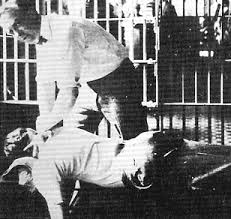The History of Chiropractic…
Dr Andrew Timbs, chiropractor, and the team at Purity Chiropractic, Peregian Springs, feel it’s important that our clinic members understand the history behind our passion. So here’s a brief history of the practice…
The institution of chiropractic has come under constant scrutiny since it began in 1895. Daniel David Palmer performed the first ever chiropractic adjustment on a then partially deaf janitor. Daniel David (DD) Palmer was a Canadian born teacher, who at the time was studying the cause and effect of disease. DD Palmer’s first chiropractic patient was Harvey Lillard. Mr. Lillard was a janitor working in the same building who had complained of hearing problems for over 17 years.
Once Harvey explained his problem to DD Palmer, he allowed him to examine his spine. DD discovered a ‘lump’ on Mr. Lillard’s back and suspected that a vertebra might be out of place, which he then repositioned with a gentle thrust. Much of Mr Lillard’s hearing was restored after several such treatments. DD Palmer opened a school of Chiropractic two years later (Palmer School of Chiropractic). He begin to teach others the power and benefits of adjustments. His son, BJ Palmer was committed to practicing and promoting chiropractic. BJ eventually took over the Palmer School in 1906. However, Chiropractors faced heavy opposition from organised medicine. Thousands of chiropractors were prosecuted for practicing medicine without a license. D.D. and many other chiropractors were jailed.
Defending Chiropractic
To defend against medical statutes BJ argued that chiropractic was separate and distinct from medicine. Asserting that chiropractors ‘analysed’ rather than ‘diagnosed’ and ‘adjusted’ subluxations rather than ‘treated’ disease. BJ co-founded the Universal Chiropractors’ Association (UCA) to provide legal services to arrested chiropractors. The UCA won their first test case in Wisconsin in 1907. Prosecutions instigated by state medical boards became increasingly common and in many cases were successful. In response, chiropractors conducted political campaigns to secure separate licensing statutes. Eventually succeeding in all fifty states, from Kansas in 1913 through Louisiana in 1974.
Research to test chiropractic theories began in 1935 with the BJ Palmer Research Clinic at the Palmer College of Chiropractic. Attempts to further test chiropractic theories by modern standards of research began in the 1970s. By the mid 1990s there was a growing scholarly interest in chiropractic. This helped efforts to improve service quality and establish clinical guidelines that recommended manual therapies for acute low back pain.
Since Dr Palmer’s first chiropractic adjustment, the art, science and research of chiropractic has progressed significantly. Today, advanced diagnostic procedures, sophisticated equipment, scientific research, and the growing acceptance among other health care professionals makes chiropractic a popular health care choice.
There are still skeptics
However, there are still many Chiropractic sceptics. The long standing feud between chiropractors and medical doctors continues. On the whole, there are many Chiropractic advocates and believers. The practice draws constant arguments and questioning about the benefits, safety, validity, cost effectiveness, evidence and research etc.
Research
The truth is, there is a lot of Chiropractic research. It shows evidence of the benefits, safety, validity, cost effectiveness etc of chiropractic. This is where foundations such as ‘The Australian Spinal Research Foundation’ are fantastic! This organisation raises money to conduct scientific and evidence based Chiropractic research.
Here are a few interesting chiropractic facts and figures. In August 1993, the Ontario Government hired an independent research consultant Pran Manga (PH.D). His job was to research the best and more cost effective options for health care. He produced a report entitled, ‘The effectiveness and cost-effectiveness of Chiropractic management of low-back pain’ – also known as the ‘Manga Report’.
The Manga Report states: “On the evidence, particularly the most scientifically valid clinical studies, spinal manipulations performed by chiropractors is shown to be more effective than alternative treatments for lower back pain (LBP). Many medical therapies are of questionable validity and are clearly inadequate”. A Risk Assessment of Cervical Manipulation, JMPT, 1995. Manga Report, Ontario Ministry of Health, 1993)
“Chiropractic adjustments (manipulations) of the spine are internationally recognised as being far safer in dealing with the neck and lower back pain than medication and many other alternatives”. A Risk Assessment of Cervical Manipulation, JMPT, 1995. Manga Report, Ontario Ministry of Health, 1993)
“There is no clinical or case-control study that demonstrates or even implies that chiropractic spinal manipulation is unsafe in the treatment of low-back pain. Some medical treatments are equally safe, but some are unsafe and generate iatronic complications for LBP patients. Our reading of the literature suggests that chiropractic manipulation is safer than medical management of lower back pain”. A Risk Assessment of Cervical Manipulation, JMPT, 1995. Manga Report, Ontario Ministry of Health, 1993)
“Chiropractic is the largest, most regulated, and best recognized of the complementary and alternative medicine (CAM) professions. It is the third largest doctoral-level health care profession after medicine and dentistry” Meeker, Haldeman; 2002; Annals of Internal Medicine
“Chiropractic care is effective, safe, government registered and regulated. Chiropractors use skill, not force or strength to conduct safe, effective adjustments. In relation to the treatment of neck and back pain, studies have shown that a course of chiropractic care was 250 times safer than a course of anti-inflammatory drugs”. Dabbs, V., & Lauretti, W.J. (1995). A Risk Assessment of Cervical Manipulation vs NSAIDS for the Treatment of Neck Pain. Journal of Manipulative and Physiological Therapeutics, 18(8), 530-536.
“Today chiropractor is a highly educated professional. Chiropractic training in Australia involves five year University courses. These courses are of similar length and depth as medical courses, but focus on promoting healthier lifestyles via better body function, rather than on drugs and surgery. This means chiropractors not only help you get to the cause of your pain, but help you look after your spine through expert care and lifestyle advice”.
For more information please ask Dr. Andrew Timbs, chiropractor, or you may want to conduct your own research.
Take a look for yourself you will find plenty of information!





